9 essential Jurassic World Evolution tips to know before you play
Get a grip on your dino theme park with these essential Jurassic World Evolution tips, covering everything from missions to dino management
At first, learning to play Jurassic World Evolution can feel like trying to understand a brand new language. Although developer Frontier is an expert at creating management sims that look absolutely stunning, it’s not the best at building tutorials. Therefore you might need a few Jurassic World Evolution tips to help you wade through some of the more opaque elements of the game. It’s utterly brilliant when it all works, so let me help you get to that point more quickly. So without further ado, here are 10 essential Jurassic World Evolution tips you need to know before you start playing:
1. You can request missions in the Control Room

Sometimes things can get a little dull if you’re just waiting for that hard-earned dino dosh to trickle in, so make sure you’ve always got a goal by requesting a contract or two in the Control Room menu. Building your relationship with each of the different departments in your park leads to some seriously good rewards, so keep ticking off those missions and building those friendships.
2. Try and complete the main missions on each island before you move on

There are three main story mission lines to complete on each island, and although it might be tempting to just leap off to the next dinoland as soon as you unlock an island, I’d advise you stop and wait a little. It actually benefits you to complete as many of these story quests as you can on an island before moving onto the next one, mainly because you’ll unlock new stuff and learn a few things that’ll definitely come in handy on later islands. Knowledge is power and all that.
3. Don’t be afraid to decline missions
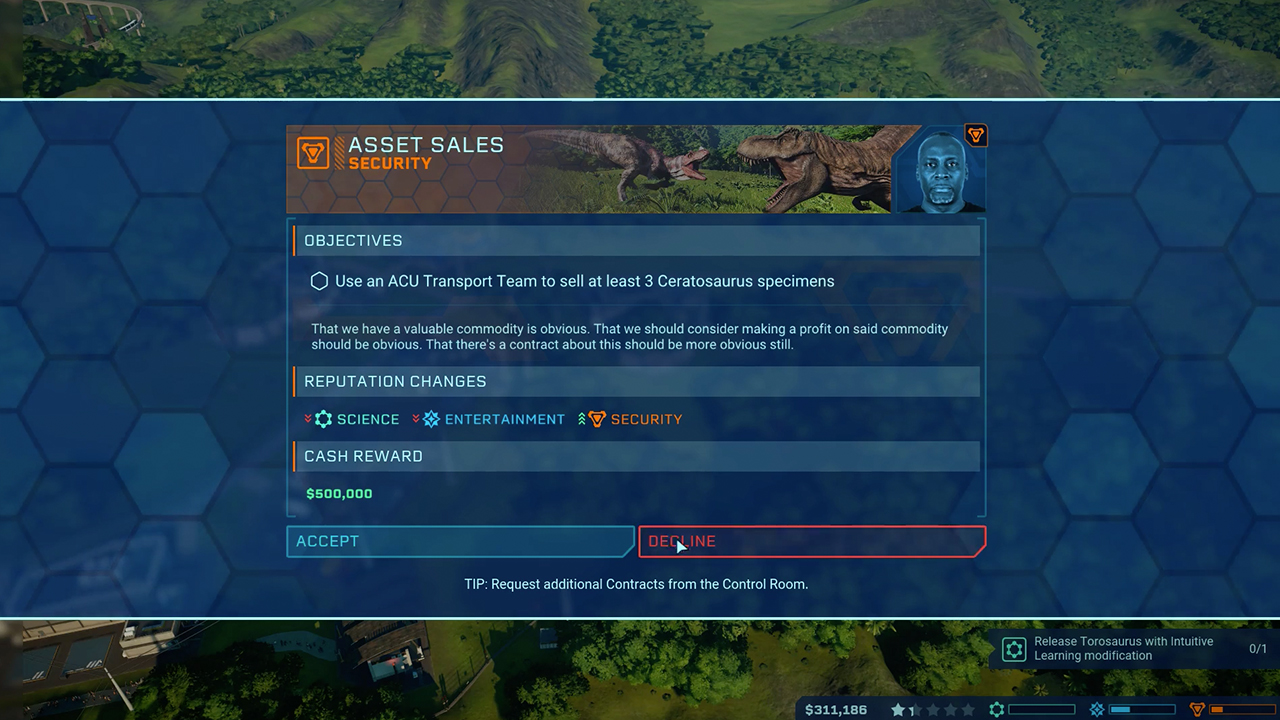
Sometimes you just don’t have the resources, the available research or the fossils to complete some of the missions you’re thrown. But, don’t be afraid to decline the ones that don’t suit your playstyle, or your current in-game progression. There was one mission about designer dinosaurs that I was thrown early on that I’ve still not found a fossil for. You don’t lose anything by declining missions, so just dismiss it and request another.
4. Struthiomimus are great at earning you some money fast
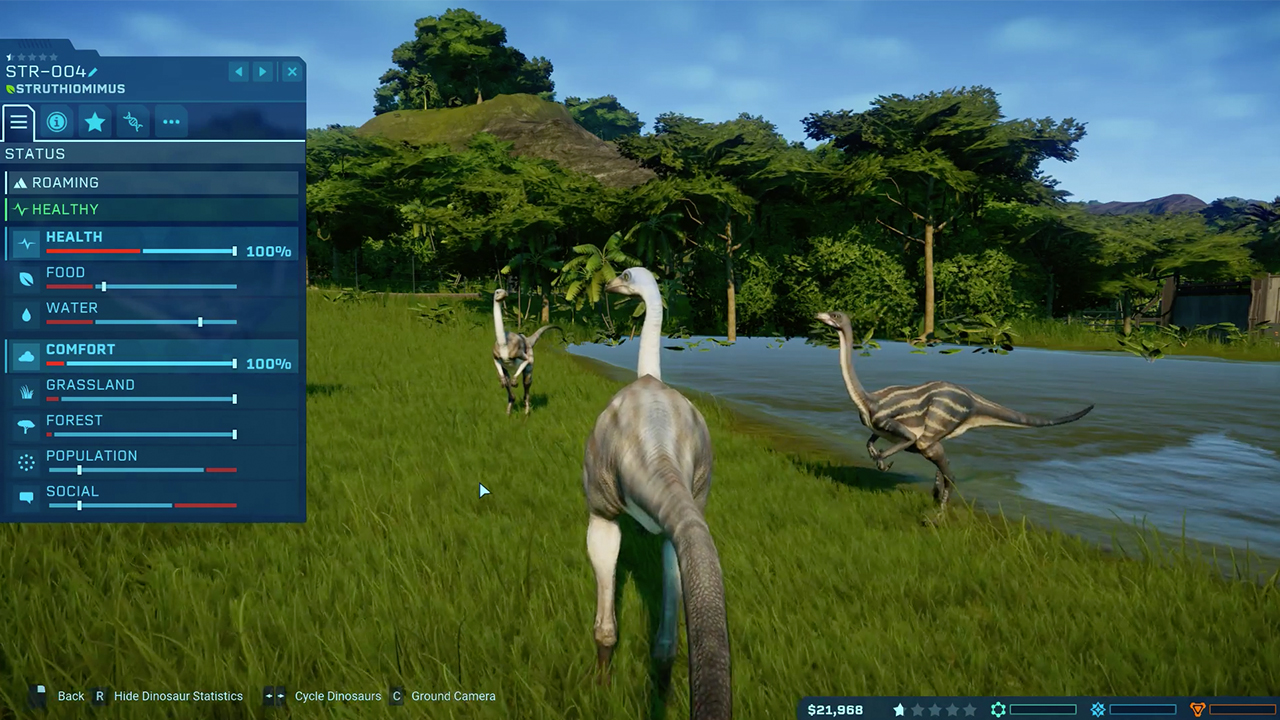
When you’re first getting started on an island, earning money from scratch can be a very, very slow process. But don’t fear, the adorable little lizard folk that are Struthiomimus are here to help. They’re inexpensive to incubate, love being in big packs, don’t need much food or space and are basically the best thing for kickstarting your finances in a new park. They won’t thank you for it, but your bank balance will.
5. Monitoring your dinos’ stats is super important
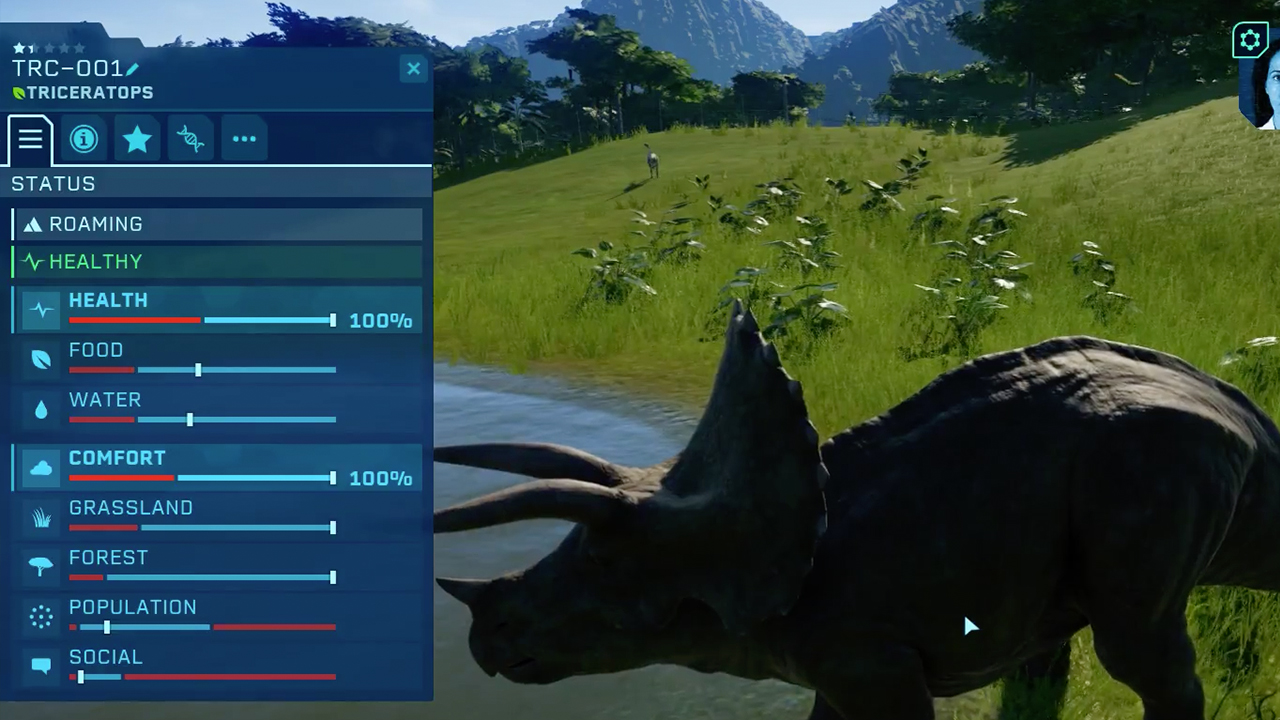
Once you’ve incubated a dino don’t just leave it to roam free in its little enclosure, you need to befriend it and learn all its secrets. Pay special attention to the status tab, where it lists stats like health, food, water, comfort and more. Some of these are self-explanatory, but it’s the last four that you’ll need to keep an eye on throughout your dino’s lifetime - grassland, forest, population and social - and keep their levels in the blue, rather than the red.
Grassland and Forest relate to your dino’s enclosure, so make sure you’ve got enough open space to satisfy its grassland requirement, and enough trees for the forest one.
Population relates to the amount of dinos it shares its enclosure with, so the more scaly friends it has the higher this will be. Some dinos really don’t like sharing their space with more than one or two other beasties. The social bar is specifically related to how many dinos of the same species it has to interact with in the same enclosure. So when you’re incubating new dinosaurs be aware that it’s possible for dinosaurs to get lonely, or feel overwhelmed by having too many other dinos about - both of its own species and others. I’ve found they’re the two key reasons why my dinos start acting out. And we all know that’s when the bad things happen.
6. Having water and food is a must for each of your dino enclosures

It’s pretty obvious that you need to make sure that your dinosaurs all have the right kinds of food available in their enclosure. Herbivores need herbivore feeders, long-necked veggiesaurs need tall feeders of the plant variety and carnivores can have carnivore feeders or live bait (sorry Mr. Goat). But it’s the water that’s easy to forget when building new dino pens, and it can be very fussy to add later. It’s there in the landscaping tab, but before you start adding dinos make sure there’s actually somewhere to add a little pond. The amount of times I’ve tried to add water and be presented with obstruction or terrain errors. Just have a little landscape prod around first before your dinos die of thirst.
7. The power system is overly complicated
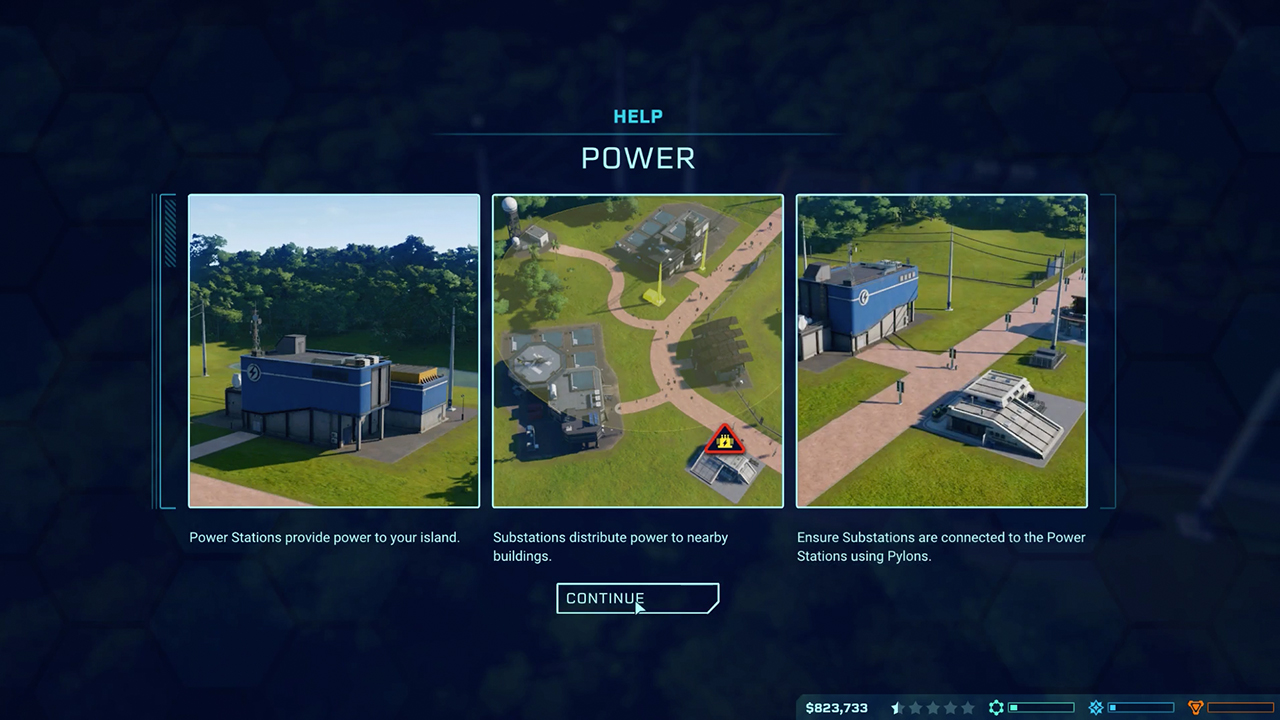
Power isn’t one of the best explained systems, but it is one of the most important. Don’t fret though, because there’s a way to make things a lot easier to manage - and prettier to look at. Dedicate one small patch of park to be your power station and build as many power stations as you can afford. Connect them all together with pylons and then just have one string of pylons running from here to the rest of your park. It’s then just a case of dropping substations along the line to cover your buildings and electric fences, which you can tuck away a little more out of sight.
8. Check your research centre before introducing new dinos
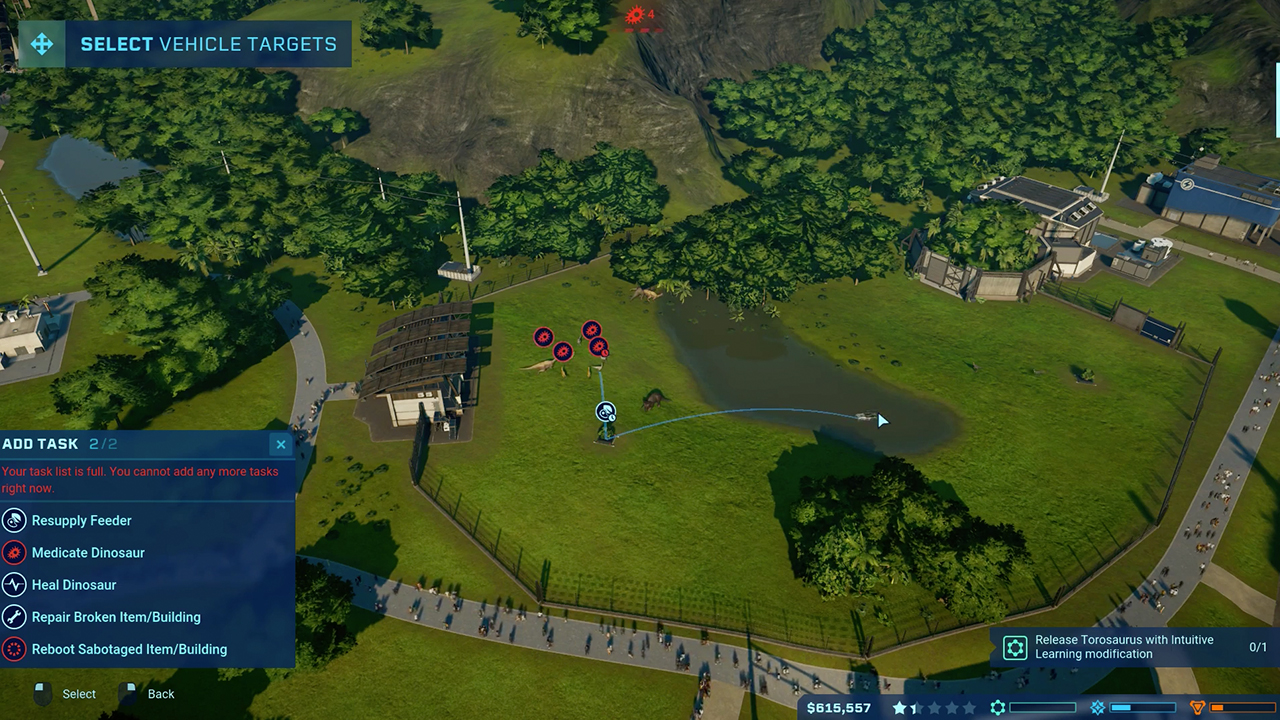
Adding new dino species to your park can be a bit of a headache for a number of reasons, but regularly it means adding the risk of a new disease spreading across your park. Before you drop in a new dino, make sure you’ve researched cures to all the available diseases at the research centre. That way, it’s just a case of medicating the one poorly one quickly before it spreads to all its friends, rather than having to wait to find the cure first and then manically administering antidotes to your entire park.
9. You can research, and then equip, upgrades for your resources

All of your buildings can be more effective if you equip them with a couple of upgrades. You can unlock them in the research centre, and then you equip them by going to the menu for your individual buildings and tabbing across to the upgrade menu. Suddenly for a small investment your power stations are more efficient, less prone to outages and even your expedition teams can dig faster and with more success. Get upgrading.
Weekly digests, tales from the communities you love, and more

Sam Loveridge is the Brand Director and former Global Editor-in-Chief of GamesRadar. She joined the team in August 2017. Sam came to GamesRadar after working at TrustedReviews, Digital Spy, and Fandom, following the completion of an MA in Journalism. In her time, she's also had appearances on The Guardian, BBC, and more. Her experience has seen her cover console and PC games, along with gaming hardware, for a decade, and for GamesRadar, she's in charge of the site's overall direction, managing the team, and making sure it's the best it can be. Her gaming passions lie with weird simulation games, big open-world RPGs, and beautifully crafted indies. She plays across all platforms, and specializes in titles like Pokemon, Assassin's Creed, The Sims, and more. Basically, she loves all games that aren't sports or fighting titles! In her spare time, Sam likes to live like Stardew Valley by cooking and baking, growing vegetables, and enjoying life in the countryside.


